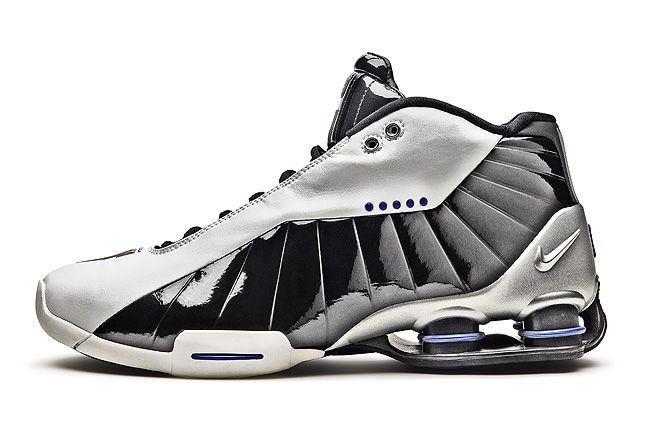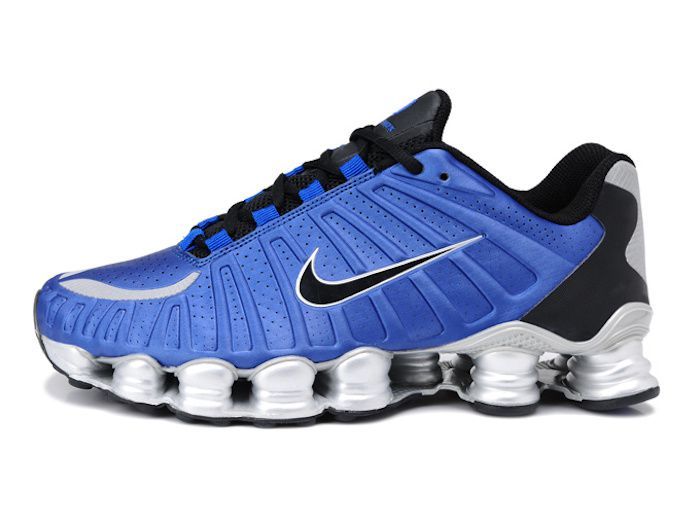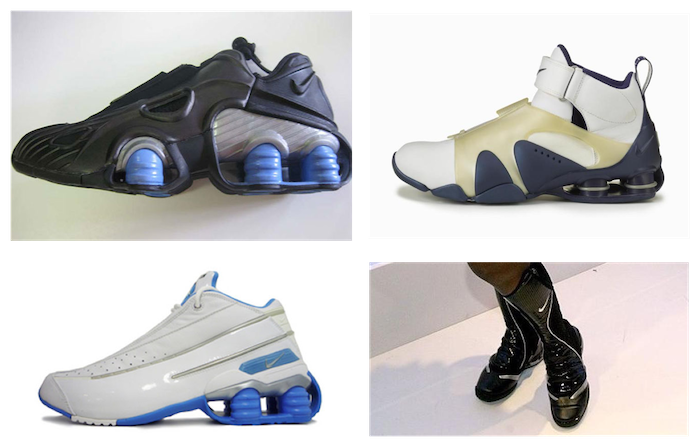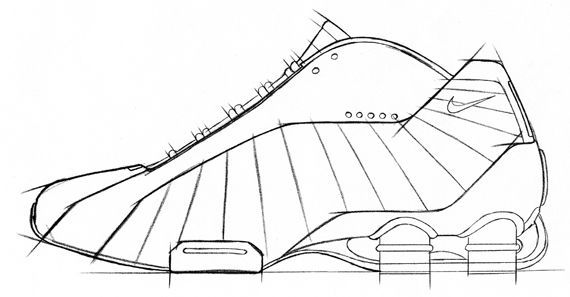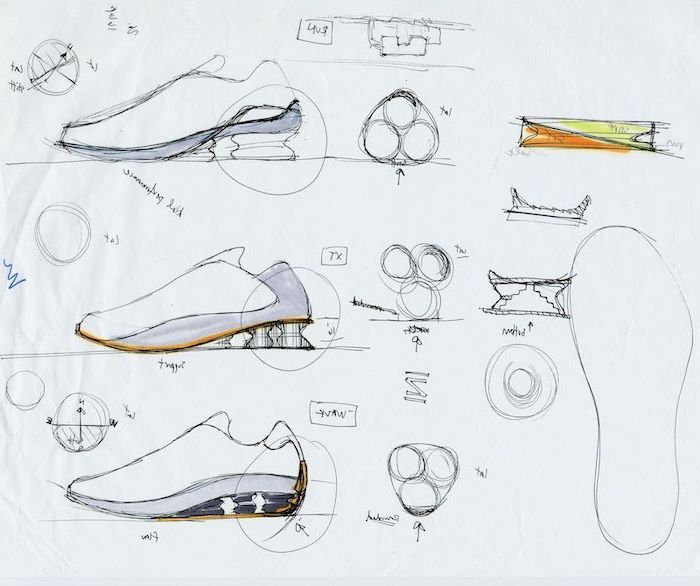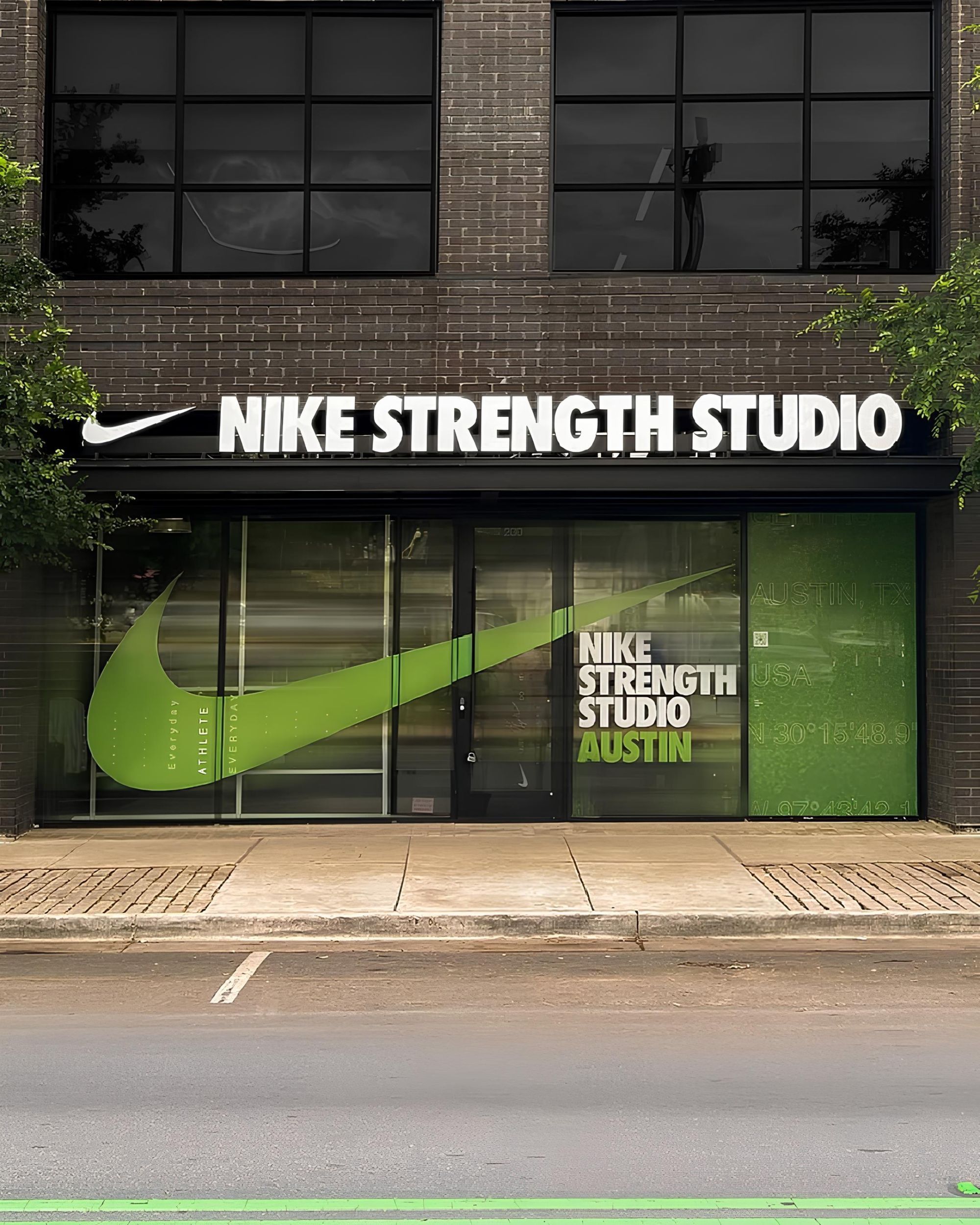
The history and future of Nike Shox We take a look back at the story and technology of the unorthodox shoe
Through its long history of iconic and popular shoe designs, Nike has also had a few misfit rebels that in some cases became popular within particular groups and certain subcultures, Nike Shox has always been one of those shoes. Forward-looking in both technology and outer worldly appearance, the Shox were a divisive design and now that Nike is bringing the technology back with an eye towards a new future for the silhouette, we took the time to have a look back at the history of this unorthodox shoe design.
Shox BB4 sketch
The story of Nike Shox actually dates back all the way to 1984 when Bruce Kilgore, the man who also designed the truly iconic Air Force 1 sneaker, had the innovative, but at the same time deviating, idea to put a mechanical cushioning system onto a pair of sneakers, instead of the air pillows that had already become synonyms with Nike’s cushioning technology. The shoe design itself was inspired by a space-age concept that had the design team looking at space suits and other astronaut gear for detail inspirations, with the pistons themselves taking design cues from the round space shuttle rocket boosters. The prototypes looked very little like what the Shox later became, just look at the cover to this article, but rather more like the suspension fork you would see on a mountain bike. Nike kept tinkering away and even when the first Shox shoe arrived to market, ultimately designed by Eric Avar, only a decade and a half later, the design struggle could be seen in the still rather outlandish pillar design that the Shox had, which lead to a very divisive greeting and the Shox from the get-go, become a silhouette for the brave.
Shox BB4
Pushed in its infancy very much as a sports shoe, the glory moment in popular culture for the Shox came in the 2000’s when the NBA’s Vince Carter, who had became the principal face for the shoe, in an Olympic game against France, jumped and slam dunked over the 2m 18 cm French center Frédéric Weis, the highlight reel dunk became known as “Le Dunk de la Mort” and was actually rumored to being a large part of why Weis lost his NBA contract the following season. The basketball model named BB4 tapped into the forward-looking zeitgeist that the millennial shift brought along with it and as Vince Carter stated:
“Getting the opportunity to debut a new technology was a no-brainer to me, it made sense with how I played.” VC
Shox R4
Beyond the BB4 basketball shoe, there was also the Shox R4, the most legendary runner version of the Shox that with their edgy look attracted them to particular subcultures, in Italy for example, they were initially pushed in gyms to bodybuilders, where their piston system was said to aid in heavy lifting, and the design also became a reactionary choice for some against the AirMax 97’s that were ruling the market and had gotten a rather mainstream reputation. Here, the literally much harder looking Shox appealed to certain outsider natures and the shoe became a symbol of that. In almost all EU countries the Shox gained their popularity predominately among certain fringe groups, a sneaker for outsiders. In northern Europe it was often football fans, perhaps because the silhouette reminded of a football boot for the streets, or in the UK the Shox became championed by the underground grime music scene, and it even went as far as Drake wearing them recently in a throwback tribute to his infatuation with the UK Grime culture.
Shox TL
Shox: XT, Stunner, Glamour, Griffin
(clockwise from top left)
During the 2000’s experimenting with the Shox technology started and spawned a number of designs and models that honestly left more to be desired. The era was already a time where the period's trend aesthetic saw an overuse of plastics, and the Shox already had that against them. The Shox XT, Griffin, and Stunner were just a few examples of problematic designs that meant Shox never reached a much wider fan base. Or the Serena Williams 2004 Shox Glamour edition with extra over-the-calf boot cover for warm-ups is hard to forget. That same year though, the Shox TL was released, and with its additional columns running all the way along the sole, it was an example of how the Shox was before its time when looking at how much better the 2018 Comme des Garçons edition fits in with the current fashion climate.
On the technical side, the Shox were interesting as it was the first sneaker model that ever incorporated what is known as energy-returning technology. Where most cushioning technologies absorb or displace force, a system like the Shox's columns during the footstrike, collapse toward the center as opposed to the edges of the heel, helping to absorb the impact efficiently. This spring-like return results in a forward propulsion and a slower rate of impact loading, which helps to reduce the risk of injury. The hollowed out columns made of an energy-efficient foam which is paired with a Pebax dispersion plate for a stable and responsive feel. The foam utilized in the Shox columns are designed to be durable and produce a spring-like effect, and like a compressed spring, that returns its retaining energy when unfurled, the Shox pistons bounces some energy back when stepped on and why the word ‘boing’ thus became the protagonist of its advertising campaigns.
Shox TL x CdG
When looking forward to Nike’s relaunch of the shoe technology this year, it could signify a very interesting time ahead for Shox. The shoe was always forward thinking, perhaps too much so for its time, and if placed now in a more contemporary fashion context with chunky trends and technological ability having a much greater focus within fashion in general. Forward leaning designs like the already teased Comme des Garçons Shox design could signify a new golden age for Nike Shox.










































